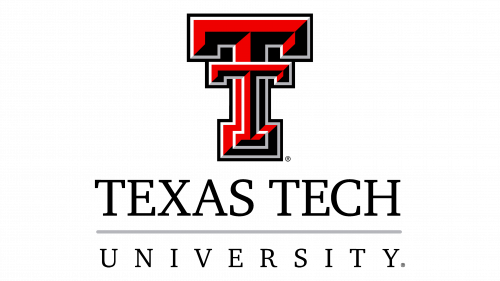Texas Tech University Logo
Texas Tech University is a high education organization, established in 1925 and based in Lubbock. It provides 104 master’s, 150 bachelor’s, and 59 doctoral study programs in the fields of technical arts, mechanics, business, humanities, and social sciences. TTU comprises 11 colleges, a graduate school, and a low school. TTU provides education to 40,000 students from across the United States and the planet.
Meaning and history
Texas Technological College unlocked its gates in 1925 thanks to the acts committed by the State Legislature. The college was set up to meet the growing demand for high-level specialists in the fields of engineering, science, physics, and other technical arts. The proper teaching of students began only two years after the foundation. Initially, the college had six buildings for housing and instruction of the original 914 applicants.
The college prospered gradually in the next years. During the 1930s, it erected its first library and recreational facilities for students and opened new schools and divisions. One of them was the ‘Division of Graduate Studies’, set up in 1935. It evolved into the Graduate School in 1954.
By the 60s, the college became the second-largest educational organization in Texas after Texas A&M. It prepared people not just in technological specialties: the college’s programs included courses in philosophy, business, social sciences, and other directions of liberal study.
The state officials started to design a project for the transformation of the organization. The various names contained the words ‘University of Art, Science and Technology’, ‘Technological College and State University’, etc. As a result of these actions, the TTC was finally transformed into the Texas Tech University, after the bill of the Legislature dated September 1, 1969.
What is Texas Tech University?
Texas Tech University is a science research organization, headquartered in Lubbock. Since its establishment in 1925, the institute has created around 250 degree-granting programs, providing knowledge in the technical and liberal areas of study. It manages 11 colleges, a graduate school, and a law school for nearly 40,000 students.
1953 – today
The Texas Tech University seal began to appear on the authorized diplomas in 1948, but it was officially recognized only five years later. It shows a round with the inscription ‘seal of the Texas Tech College’ on it. Later, the word ‘college’ was replaced with the word ‘university’. Inside the ring, there was a shield divided into four parts, each depicting its symbol. The star in the upper right block refers to the State of Texas; the book in the upper left book means ‘knowledge’; in its turn, the key in the lower left pentagon translates as ‘home’; finally, the lamp in the lower right corner reflects ‘school’. Each block is separated by a white space containing multiple cotton balls, which refers to the distributed cotton industry of the state. Above the shield, an eagle sits, spreading its wings.
1963 – 2000
Although the official logotype for Texas Tech was completed in 1926, it became official almost 40 years later. It was a large and bold capital ‘t’, placed behind another smaller doppelganger. This logo is often nicknamed ‘The Double T’, and its concept was improved in future logos.
2000 – today
The next logo for the brand shows the letters ‘t’ in a refreshed design. Now, the two symbols were repainted dark red and black in a way so the new coloring makes the letters look 3D. Each letter has a bold contour in a metal style, while the entire logo is contoured black.
Color
The coloring code of Texas Tech University consists of red, white, and black shades. In the logotype, the brand designers paint both letters half dark red, and half black. A bold silver contour helps the artists make the characters look 3D.
As for the sigil, here the shades are lighter. The circle is bright red, and it features a white inscription. It is also contoured by a black, white & black outline from the outside and simple black from the inside. The white shield features black cotton bolls on it. The four blocks are red, and they serve as backgrounds for mostly black and white symbols. The bird is also black and white.
Font
As well as the designers of numerous other institutes, the artists of the Texas Tech Seal used a classic semibold uppercase typeface with prominent serifs to write the caption. The Double T logotype shows the characters in a similar typeface, just bolder.
















